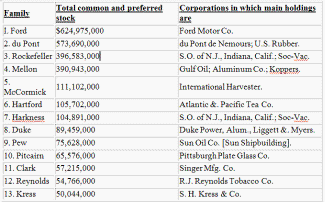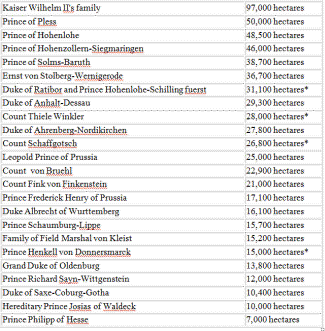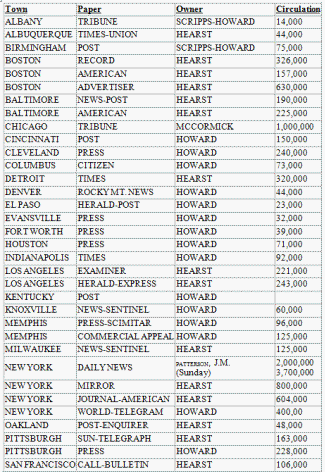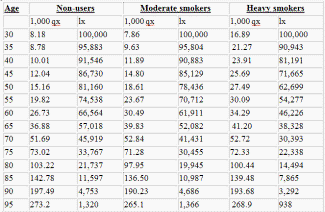Re: Facts and Fascism, by George Seldes
CHAPTER VI: THE SUPPRESSED TOBACCO STORY
FEW persons are aware that the two largest advertisers in the country are the manufacturers of the most expensive and the least expensive products, namely automobiles and cigarets. It is, therefore, natural that the press which protected the automobile industry during the first three years of war scandals should give the same protection to one of the most harmful of all industries, the tobacco manufacturers. The story of tobacco is told here to illustrate its power in dictating to the press, and also to satisfy the request of thousands who were unable to obtain the special issue (and 10,000 additional reprints) of the In Fact story. The entire report of Dr. Raymond Pearl is included in the Appendix.
"War is booming the Tobacco Business," say recent press reports; no less than 20,000,000,000 (twenty billion) cigarets are being made and smoked a month. Press and radio urge you to remember the fighters against Fascism by sending them tobacco.
But the American press and radio -- at least 99% of each -- have suppressed the facts, scientifically established, that the more tobacco a person uses the earlier he dies. Tobacco impairs the health of all users, moderate and heavy. But the tobacco companies spend fortunes -- four (Camels, Lucky Strikes, Chesterfields and Old Golds)spend $50,000,000 annually -- to keep the American public in ignorance.
The story is sensational. It must be said here that the term sensational is generally used against a newspaper to characterize it as yellow, biased, unfair, given to overplaying news. But sensational news can also be news really worth playing up, such as, for example, the discovery of the electric light, or the American landing in Sicily. These were sensational news items which no paper need be ashamed for headlining, whereas the Hearst press and the New York Daily News, which played up the Errol Flynn rape case for almost as much space as the Rommel defeat in Africa, were illustrating the sensationalism of yellow journalism.
Certainly the first scientific, documented report from the head of the biology department of Johns Hopkins University listing tobacco as first in impairing life, as causing users, of whom there are tens of millions in America alone, to die earlier than non-users, was a first-class story, a big story, and in a scientific way a sensational story, and worth the front page of any paper not corrupted by cigaret advertising. But to this day the story is suppressed by 99% of our commercial newspaper and magazine press, and if used at all in the other 1% (which is doubtful) it is buried or played down so effectively that not one-tenth of 1% of America's newspaper readers have ever heard of it.
And here is the evidence of the venality of the press as regards tobacco -- an industry which pays the press much more than $50,000,000 a year.
In February, 1938, Dr. Raymond Pearl, then head biologist at Johns Hopkins University, gave the New York Academy of Medicine the scientific results of a study of the life histories of some 7,000 Johns Hopkins cases which, for newspapers, should have constituted a story "to scare the life out of tobacco manufacturers and make the tobacco users' flesh creep," as Time commented.
In brief, Dr. Pearl discovered that smoking shortens life. Between the ages of 30 and 60, 61% more heavy smokers die than non-smokers. A human being's span of life is impaired in direct proportion to the amount of tobacco he uses, but the impairment among even light smokers is "measurable and significant."
The Associated Press, United Press and special correspondents of New York papers heard Dr. Pearl tell the story. But a paragraph or two buried under less important matter, in one or two papers, was all that the great free press of America cared to make known to its readers, the consumers of 200,000,000,000 cigarets a year.
When the Town Meeting of the Air announced a debate, "Do We Have a Free Press?" January 16, 1939, the present writer sent to Secretary of the Interior Ickes documentary evidence proving quite the opposite. In the debate Mr. Ickes easily bested Frank Gannett, chain newspaper owner. During the question period someone asked for examples of news suppression and Mr. Ickes mentioned a few casually, adding, "I understand that at Johns Hopkins University there is a very sensational finding resulting from a study of the effect of cigaret smoking that has not yet appeared, so far as I know, in any newspaper in the United States. I wonder if that is because the tobacco companies are such large advertisers."
The statement was correct. Research had proved that although the A.P., U.P. and I.N.S. had sent the story to every paper in America, although New York science reporters were present and Science Service had sent all advance account to numerous big papers, 98% of the big city press, the press which takes the cigaret advertising, suppressed the story.
But because Mr. Ickes had said "in any newspaper" that same press threw a journalistic bombshell. It attacked and smeared Mr. Ickes, it lied outright and printed half-lies which are harder to nail, it distorted and faked the news, published untrue editorials and generally presented to America the spectacle of as corrupt a press as that usually charged to fascist nations.
The tobacco story, to be exact, appeared in some country papers, and one or two big city papers. Here is what happened in the "great free press metropolis of New York:
Herald Tribune, totally suppressed.
Sun, totally suppressed.
News, totally suppressed.
Mirror, totally suppressed.
Post, totally suppressed.
Journal-American, totally suppressed.
World Telegram carried a few lines.
Times carried a few lines.
The World Telegram and the Times carried a three-fourth and half column story respectively, dealing first with the effect on long life or hard work and alcohol, then, at the end of the story, tobacco. This is all the Times had to say, and that at the bottom of the first column on page 19:
The tables had been seen by the press. The leading authority in America, if not in the world, had made a great discovery and presented the first scientific study in a controversial matter in which some 50,000,000 Americans consuming billions of cigarets were interested, and 75% of the New York press suppressed the story, 25% half-suppressed it, 100% of the press manhandled it.
The Federated Press, serving the labor press (which gets precious little cigaret advertising) reported that the Herald Tribune not only suppressed the tobacco story but claimed it never saw it. The F.P. said: "Wilbur Forrest, executive editor (said) his paper had been scooped on the tobacco story. Asked how an Associated Press member could be scooped on an A.P. story, he explained that the Herald Tribune does not get the A.P. local service. This excuse was punctured by A.P. executives, who insisted that the story went not only to the Herald Tribune but also to other New York papers that failed to print a line."
A large part of the controversy hinged on Dr. Pearl. In preparing the evidence, the present writer wrote Dr. Pearl, who replied:
Inasmuch as a search at the New York Public Library revealed that no San Francisco, Los Angeles, Boston, Chicago, Philadelphia, Detroit, Pittsburgh, Cleveland, Cincinnati newspaper, or, in fact, any big newspaper besides the Washington Post, had covered the story, Dr. Pearl was asked to name two or three newspapers, outside of country dailies and country weeklies (which are not subsidized by tobacco advertising), which ran his story. He refused to answer.
There are 200 big daily papers in America, some 1,700 smaller dailes and many thousand weeklies. Apparently Dr. Pearl had 249 country paper clippings plus the Washington Post. Science Service, asked to look through its files, found only the Washington Post story and the two buried references in New York.
But no sooner had Ickes mentioned Dr. Pearl than the A.P. rushed out a column story which the Times headlined: "Contradicts Ickes on Tobacco Story -- Johns Hopkins Biologist Says Report ... Was Widely Published. -- 'No Press Suppression.'"
Six cigaret companies grossed $200,000,000 in 1937 (SEC report). A combined profit after all charges of $83,000,000 that year was reported by the Census of American Listed Corporations (April 5, 1939).
The major companies' advertising bill a year on four brands is:

The newspapers, Editor & Publisher, Saturday Evening Post, all say that advertising has nothing to do with editorial policy. The facts are:
1. The cigaret companies spend more than $50,000,000 a year.
2. News inimical to tobacco is not published.
3. Ninety-nine percent of the American press suppresses government fraud orders against advertisers.
The tobacco advertisers share with peacetime automobile advertisers first place in spending money in newspapers and magazines. This is without doubt the reason the press suppressed the story. The press is therefore part of a system spreading actual poison throughout America. As for the poison of reaction (Fascism) the evidence is just as thoroughly documented.
FEW persons are aware that the two largest advertisers in the country are the manufacturers of the most expensive and the least expensive products, namely automobiles and cigarets. It is, therefore, natural that the press which protected the automobile industry during the first three years of war scandals should give the same protection to one of the most harmful of all industries, the tobacco manufacturers. The story of tobacco is told here to illustrate its power in dictating to the press, and also to satisfy the request of thousands who were unable to obtain the special issue (and 10,000 additional reprints) of the In Fact story. The entire report of Dr. Raymond Pearl is included in the Appendix.
"War is booming the Tobacco Business," say recent press reports; no less than 20,000,000,000 (twenty billion) cigarets are being made and smoked a month. Press and radio urge you to remember the fighters against Fascism by sending them tobacco.
But the American press and radio -- at least 99% of each -- have suppressed the facts, scientifically established, that the more tobacco a person uses the earlier he dies. Tobacco impairs the health of all users, moderate and heavy. But the tobacco companies spend fortunes -- four (Camels, Lucky Strikes, Chesterfields and Old Golds)spend $50,000,000 annually -- to keep the American public in ignorance.
The story is sensational. It must be said here that the term sensational is generally used against a newspaper to characterize it as yellow, biased, unfair, given to overplaying news. But sensational news can also be news really worth playing up, such as, for example, the discovery of the electric light, or the American landing in Sicily. These were sensational news items which no paper need be ashamed for headlining, whereas the Hearst press and the New York Daily News, which played up the Errol Flynn rape case for almost as much space as the Rommel defeat in Africa, were illustrating the sensationalism of yellow journalism.
Certainly the first scientific, documented report from the head of the biology department of Johns Hopkins University listing tobacco as first in impairing life, as causing users, of whom there are tens of millions in America alone, to die earlier than non-users, was a first-class story, a big story, and in a scientific way a sensational story, and worth the front page of any paper not corrupted by cigaret advertising. But to this day the story is suppressed by 99% of our commercial newspaper and magazine press, and if used at all in the other 1% (which is doubtful) it is buried or played down so effectively that not one-tenth of 1% of America's newspaper readers have ever heard of it.
And here is the evidence of the venality of the press as regards tobacco -- an industry which pays the press much more than $50,000,000 a year.
In February, 1938, Dr. Raymond Pearl, then head biologist at Johns Hopkins University, gave the New York Academy of Medicine the scientific results of a study of the life histories of some 7,000 Johns Hopkins cases which, for newspapers, should have constituted a story "to scare the life out of tobacco manufacturers and make the tobacco users' flesh creep," as Time commented.
In brief, Dr. Pearl discovered that smoking shortens life. Between the ages of 30 and 60, 61% more heavy smokers die than non-smokers. A human being's span of life is impaired in direct proportion to the amount of tobacco he uses, but the impairment among even light smokers is "measurable and significant."
The Associated Press, United Press and special correspondents of New York papers heard Dr. Pearl tell the story. But a paragraph or two buried under less important matter, in one or two papers, was all that the great free press of America cared to make known to its readers, the consumers of 200,000,000,000 cigarets a year.
When the Town Meeting of the Air announced a debate, "Do We Have a Free Press?" January 16, 1939, the present writer sent to Secretary of the Interior Ickes documentary evidence proving quite the opposite. In the debate Mr. Ickes easily bested Frank Gannett, chain newspaper owner. During the question period someone asked for examples of news suppression and Mr. Ickes mentioned a few casually, adding, "I understand that at Johns Hopkins University there is a very sensational finding resulting from a study of the effect of cigaret smoking that has not yet appeared, so far as I know, in any newspaper in the United States. I wonder if that is because the tobacco companies are such large advertisers."
The statement was correct. Research had proved that although the A.P., U.P. and I.N.S. had sent the story to every paper in America, although New York science reporters were present and Science Service had sent all advance account to numerous big papers, 98% of the big city press, the press which takes the cigaret advertising, suppressed the story.
But because Mr. Ickes had said "in any newspaper" that same press threw a journalistic bombshell. It attacked and smeared Mr. Ickes, it lied outright and printed half-lies which are harder to nail, it distorted and faked the news, published untrue editorials and generally presented to America the spectacle of as corrupt a press as that usually charged to fascist nations.
The tobacco story, to be exact, appeared in some country papers, and one or two big city papers. Here is what happened in the "great free press metropolis of New York:
Herald Tribune, totally suppressed.
Sun, totally suppressed.
News, totally suppressed.
Mirror, totally suppressed.
Post, totally suppressed.
Journal-American, totally suppressed.
World Telegram carried a few lines.
Times carried a few lines.
The World Telegram and the Times carried a three-fourth and half column story respectively, dealing first with the effect on long life or hard work and alcohol, then, at the end of the story, tobacco. This is all the Times had to say, and that at the bottom of the first column on page 19:
"Professor Pearl also presented the 'first life tables ever constituted' to show relation between tobacco and longevity. The tables showed, he said, 'that smoking is associated with a definite impairment of longevity.'
"This impairment, he added, is proportional to the habitual amount of tobacco usage in smoking, being great for the heavy smokers and less for moderate smokers. But even in the case of the moderate smoker, he said, the impairment in longevity is 'sufficient to be measurable and significant.'"
The tables had been seen by the press. The leading authority in America, if not in the world, had made a great discovery and presented the first scientific study in a controversial matter in which some 50,000,000 Americans consuming billions of cigarets were interested, and 75% of the New York press suppressed the story, 25% half-suppressed it, 100% of the press manhandled it.
The Federated Press, serving the labor press (which gets precious little cigaret advertising) reported that the Herald Tribune not only suppressed the tobacco story but claimed it never saw it. The F.P. said: "Wilbur Forrest, executive editor (said) his paper had been scooped on the tobacco story. Asked how an Associated Press member could be scooped on an A.P. story, he explained that the Herald Tribune does not get the A.P. local service. This excuse was punctured by A.P. executives, who insisted that the story went not only to the Herald Tribune but also to other New York papers that failed to print a line."
A large part of the controversy hinged on Dr. Pearl. In preparing the evidence, the present writer wrote Dr. Pearl, who replied:
"I may say that the newspaper coverage on my statement regarding the association between tobacco smoking and longevity was very widespread. Without taking the trouble to count them, for which I have not the time to spare, I should say that the point was amply and promptly reported in no less than 250 daily and weekly newspapers in this Country."
Inasmuch as a search at the New York Public Library revealed that no San Francisco, Los Angeles, Boston, Chicago, Philadelphia, Detroit, Pittsburgh, Cleveland, Cincinnati newspaper, or, in fact, any big newspaper besides the Washington Post, had covered the story, Dr. Pearl was asked to name two or three newspapers, outside of country dailies and country weeklies (which are not subsidized by tobacco advertising), which ran his story. He refused to answer.
There are 200 big daily papers in America, some 1,700 smaller dailes and many thousand weeklies. Apparently Dr. Pearl had 249 country paper clippings plus the Washington Post. Science Service, asked to look through its files, found only the Washington Post story and the two buried references in New York.
But no sooner had Ickes mentioned Dr. Pearl than the A.P. rushed out a column story which the Times headlined: "Contradicts Ickes on Tobacco Story -- Johns Hopkins Biologist Says Report ... Was Widely Published. -- 'No Press Suppression.'"
Six cigaret companies grossed $200,000,000 in 1937 (SEC report). A combined profit after all charges of $83,000,000 that year was reported by the Census of American Listed Corporations (April 5, 1939).
The major companies' advertising bill a year on four brands is:

The newspapers, Editor & Publisher, Saturday Evening Post, all say that advertising has nothing to do with editorial policy. The facts are:
1. The cigaret companies spend more than $50,000,000 a year.
2. News inimical to tobacco is not published.
3. Ninety-nine percent of the American press suppresses government fraud orders against advertisers.
The tobacco advertisers share with peacetime automobile advertisers first place in spending money in newspapers and magazines. This is without doubt the reason the press suppressed the story. The press is therefore part of a system spreading actual poison throughout America. As for the poison of reaction (Fascism) the evidence is just as thoroughly documented.








